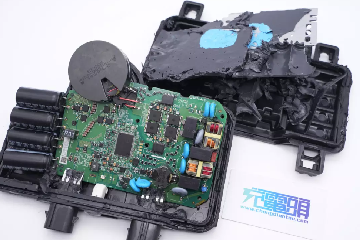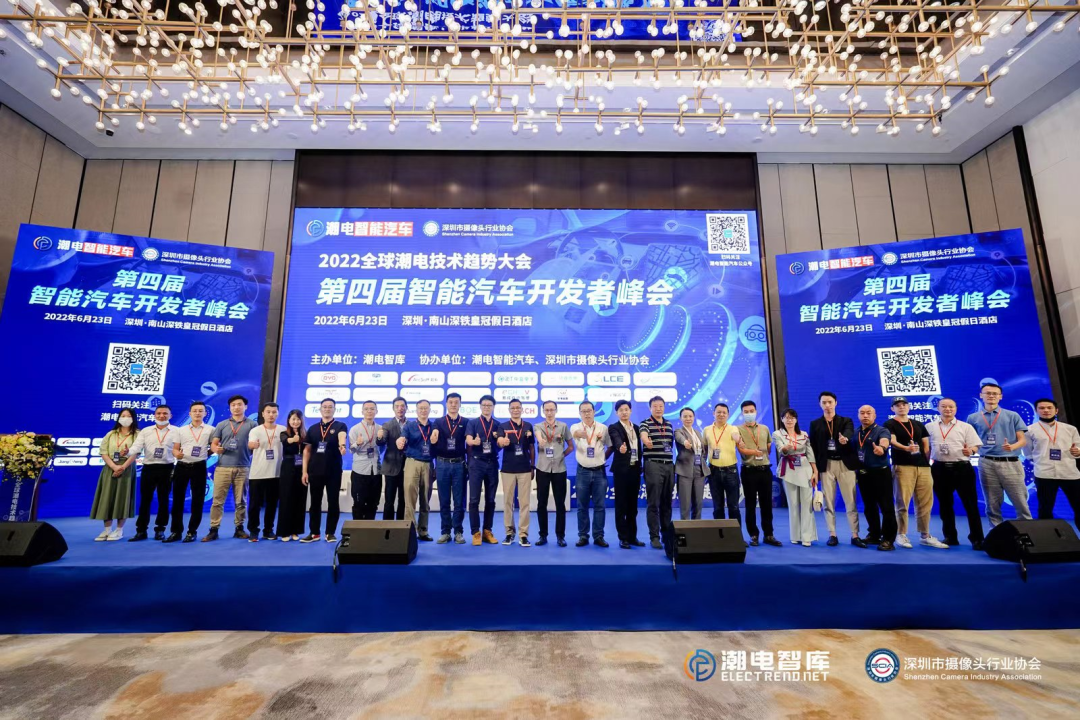The XR industry wave dissipates
Starting with the Google Glass box, the whole industry has embraced XR with great enthusiasm.
The whole industry I am talking about here refers to all industries related to people's livelihood, which is also the original intention of the later XR to create a meta-universe with virtual reality fusion technology: copying a digitized real world to a virtual network, so that people can create creativity in the virtual network with a God's perspective, and in turn applying the realization in the real world, to validate and transform and optimize the real world.
This idea that everyone can become a god in the virtual world, that is, XR practitioners continue to be excited, but also allows consumers to continue to look forward to, and thus the industry in the continuous "hope ~ disappointment" cycle process, but also to remain unshakeable.
Since Google Glass and Microsoft HoloLens remain at the military and industrial commercial level, and both projects have been terminated, META's Meta Quest and Apple's Vision Pro have been pinned by the industry with high hopes of changing the world.
META in the industry after the total sales of VR headsets more than 10 million units, the public announced a hundred times more ambitious meta-universe planning, attracted a large number of players to respond, the industry once again behind the fire, we all think that this kind of good thing, it is impossible not to succeed.
However, META even for the meta-universe changed its name, but also did not change the fate of the industry, after a period of frenzy, consumers hands of a variety of VR headset continues to be like the year of Google Glass box, was thrown in the corner of the consumer dust. xr industry every time a little wave, always in the calm consumer market quickly dissipated.
Apple has become a panacea, but it's not a miracle cure for the industry.
Even when Apple's Vision Pro was released, the whole industry thought that the superiority of Apple's IOS system coupled with the excellence of Vision Pro's hardware would surely break the XR market's embarrassing situation over the years, and even Apple mobilized most of the developers to carry out in-depth research and development of the industry's adaptations around the Vision Pro, and had already moved about 99% of the commonly used software for the iPad to the Vision Pro. Commonly used software has been moved to the Vision Pro application market for normal use.
Apple itself also has great expectations for Vision Pro, in addition to opening up their own Micro OLED micro-display technology to the panel companies for mass production research and development, and even personally with Samsung Display, Samsung Semiconductor, LGD, Hynix and other companies, to do a lot of mass production of the prospect of planning.
Apple, although explicitly and implicitly said that the initial generation of Vision Pro is mainly for developers and industrial, commercial industry dedicated technology users, and not for ordinary consumers. And the first generation of Vision Pro after the market, also did become the head of the industry's R & D must-have talisman.
But the reality is that the sales of the initial generation of Vision Pro did not rise rapidly, and with Apple hopes that the initial generation of Vision Pro at least sell 4 million units ~ 6 million units of expectations, a far cry.
Even if the original is not ready to sell the Chinese mainland market open for purchase, but also did not really cause the industry to have greater feedback, and even due to the Chinese mainland science and technology enterprises, can not find how to use the Vision Pro to enhance their own product development strength, as well as to develop the application of the scene of the method, hundreds of thousands of units can not be consumed, which for the claimed more than 330,000 innovative enterprises, more than 3000 mainland China, which claims to have more than 330,000 innovative enterprises and more than 3,000 colleges and universities, is completely unbelievable.
Apple can be said to have poured great resources into the hardware of the first-generation Vision Pro, even an ordinary headband process, using extremely complex mechanical models and weaving models for optimization, that more complex 3D glass panels, Micro OLED display and optical prism sets, previously only available in the military, ultra- cutting-edge optical recognition, tracking and interaction systems, etc., coupled with its smooth The first generation of the V8 was the first to be launched in the United States, and the first generation of the V8 was the first to be launched in the United States.
Until now, the first generation Vision Pro has been on sale for some time, and various organizations with the intention of copying have disassembled the product and software for several times, and no one in the entire manufacturing industry has been able to come up with better hardware and software solutions than the first-generation Vision Pro.
Apple put the first generation of Vision Pro refined into a panacea, out of the consumer to take the effect of the view, but also not the industry's miracle cure.
Money is not the problem, the problem is not get money
Many people put Apple's first-generation Vision Pro market is not better, that the price is too high. But this argument for the claim that there are 300 million middle class, about 150,000 hundreds of millions of assets, nearly 4 million high net worth people, high-end consumer market size of 1.7 trillion yuan in mainland China, the price of 30,000 can be described as cheap to the extreme, far less than the market online video of a mahjong game, the price of a bag, for the daily sunshine of the luxury cars, townhouses, look at the dominant president of the market, and even the Apple itself is on! The sales of the first generation Vision Pro in the Chinese market are in the dark.
In fact, for the entire XR market, price, or money is not a problem.
Industry data shows that in 2014, the XR industry's first financing peak, mainly driven by the success of the Oculus Rift, as well as the huge impact of Facebook's acquisition of Oculus VR in March 2014 for $2 billion. At the time, investment increased year on year, and by 2016 global funding had reached approximately $3 billion.
By 2021 the XR industry once again ushered in a financing climax period, with 124 financing and M&A events occurring throughout the year 2021, with total investment and financing amounting to $18.19 billion, a year-on-year increase of 788%. Among them, the larger amount of events include byte jump to 9 billion yuan merger and acquisition of Pico, Nreal completed more than 100 million dollars of C round of financing and so on.
And in 2022, the number of overseas XR financing and M&A events in the first half of the year alone amounted to 104, and the financing amount increased by 31% year-on-year to $25.07 billion; domestic financing and M&A events grew to 68, and the financing amount increased by 67% year-on-year to $6.19 billion. The global financing scale for the whole year exceeded $4 billion.
With such a large-scale financing, as long as a little bit of money is taken out to study Apple's first-generation Vision Pro, the annual sales of 5 million or even ten million units, no problem at all.
The paradox between sales, the future of XR = AR + AI?
If you look at sales alone, the industry should be looking more at Sony's PlayStation VR (PSVR) headset and META's Quest sales to really see what's going on while it's going on, but that's what the industry sees as very paradoxical.
Sony's PlayStation VR (PSVR) headset was released on October 13, 2016, and in the months following its release, PSVR sales reached about 750,000 units. It had then reached annual sales of over 1 million units by 2018, but by the end of 2019, Sony announced that cumulative sales had surpassed 5 million units. The annual sales of PSVR then started to slow down and it was only by 2022 that the total sales surpassed 6 million units.
Relative to for Sony's sales, the other META's sales were a bit more impressive. the Oculus Rift was also released on March 28, 2016, and was estimated to sell 500-700,000 units in 2017.
By the time Quest was a big hit in 2020, annual sales were around 1.5-2 million units; Quest was a bestseller in 2021, with annual sales estimated at 5-6 million units, and Quest 2 had annual sales of around 7-8 million units in 2022; cumulative Quest sales by 2023 were estimated to be just over 20 million units. This is the fundamental reason why META believes that after a base of 10 million units, the industry should see a big change.
For the huge difference between the two in terms of sales scale and Apple, the industry basically attributes the reason to the fact that the price of the initial Vision Pro is more than 10 times that of the Sony and META headsets, but Sony's headset is just a gaming headset, and META's headset is obviously more functional, can interact and watch audio and video, and is still just an accessory monitor role.
And the first generation of Vision Pro has been separated from the role of a mere headset, Apple defined spatial computing platform, is not just a gimmick, but to make the first generation of Vision Pro really have the office function of the productivity tool, from the game, watching movies, entertainment to office, productivity creation, etc., all have a basic support platform.
When people are in the PSVR and Oculus headset after the conjecture of what features to add, spend more money are willing to pay, a real can realize these functions, and the display effect basically meets the minimum requirements of the near-eye display, can complete most of the functions of the industry conjecture of the first generation of the Vision Pro spatial computing platform hardware appeared, the market is not for it to pay for the bill.
Then the XR industry's real market demand point where, is the low price, is lightweight, is open source, is the general ...... seems to be every road, there are companies "seriously" trips, the fact that no one has been recognized by the market.
Seeing the VR headset in the market to set off this wave, and to calm down, the industry had to be from the wave of AI artificial intelligence, once again the AR glasses to pick up.
In fact AR glasses industry financing scale over the years are not small, from 2021 onwards the global annual total financing are about 1.5 billion dollars, 2022 also reached about 2 billion dollars.
And from 2023, AR glasses terminal enterprises in mainland China have expanded production, with annual production capacity targets at the order of one million units.
Although these volumes for the total sales of more than 20 million VR headset, is not a concept at all, but in the virtual reality + AI artificial intelligence double concept stimulation, all venture capitalists are afraid that they miss the wind mouth, as long as there is AR concept, there will be people down the field.
However, from the point of view of technology industry professionals, the development of AR glasses to the present, is still stuck in the shooting, literacy and translator level, at most, the screen is upgraded to the level of the Google Glass box, the smart headset integrated into the legs of the glasses.
Only the majority of industry products have not been able to break the ceiling of Google Glasses, Microsoft HoloLens, Google Glasses, Microsoft HoloLens is also still surviving in the professional market, Google, Qualcomm, Gore and other companies time and time again for the industry to launch the overall solution, but each of them is on the ten-million level shipment target, i.e., unattainable, more unattainable.
It seems that XR technology for the entire technology industry, manufacturing industry, consumer market, are still only in their own imagination.
If there is any gap between reality and virtual reality, it is only that people for the virtual world "free play" unlimited desire, and the real world continues to tighten the content space, so that even the best hardware, have lost their souls, XR so, the future of the AI, should also be so!
Translated with DeepL.com (free version)






































